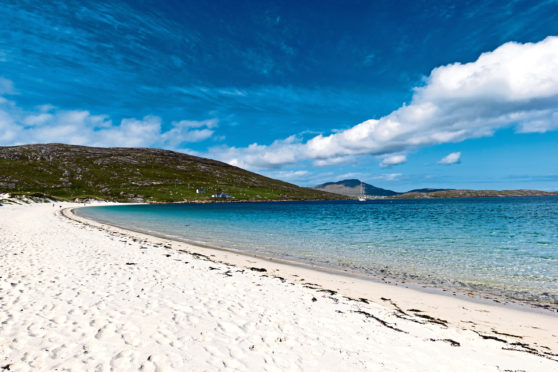
A stunning island of almost exotic beauty, Vatersay is the southernmost inhabited island of the Outer Hebrides.
Measuring just 4.8 kilometres (3 miles) north to south and 5.6km (3.5 miles) from west to east, Vatersay might be small but it certainly packs in a lot.
The isle’s most striking features are its pristine white, sandy beaches and piercing blue waters.
West Bay and the eastern Vatersay Bay wouldn’t look out of place in a far-flung holiday destination – proof that you don’t have to travel too far for that exotic beach break.
You can also take the coastal trails to spot flocks of puffins, guillemots and gannets that frequent the island.
More sombre, but equally fascinating things to see on the isle include two monuments. These commemorate the 1853 Annie Jane maritime disaster, where 350 emigrants were lost off the coast of Vatersay on their way to Canada, and the RAF Catalina plane crash in 1944.
Interesting architecture on the island includes an Iron Age broch and a Bronze Age cemetery.
Vatersay is also connected by causeway to the nearby island of Barra, making it perfect for a spot of Outer Hebridean island hopping.
Vatersay’s wildlife and spectacular beaches make it an unmissable destination.
Location: Vatersay
History: In September 1853, one of Britain’s worst maritime disasters occurred off the Vatersay coast in the Outer Hebrides.
More than 350 men, women and children lost their lives near the island during a fierce storm.
Around 450 had boarded the Annie Jane, which was travelling from Liverpool to Montreal.
Among their number were emigrants from Ireland and Scotland, London schoolboys, Swiss missionaries and skilled workers from Glasgow hired to help build railways in Canada.
At the time, the island’s sparse population struggled to cope with the number of casualties, most of whom were hurriedly interred in a mass grave.

Enjoy the convenience of having The Sunday Post delivered as a digital ePaper straight to your smartphone, tablet or computer.
Subscribe for only £5.49 a month and enjoy all the benefits of the printed paper as a digital replica.
Subscribe